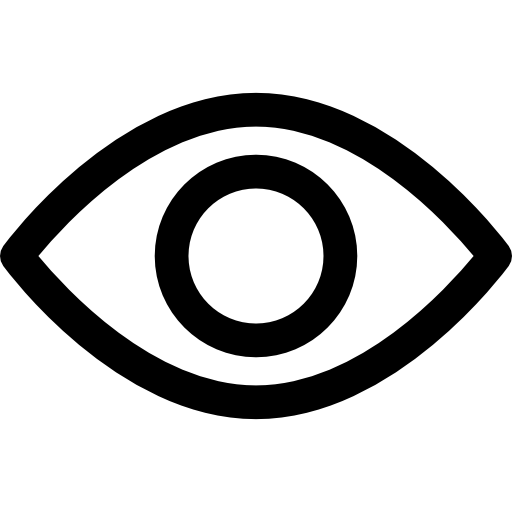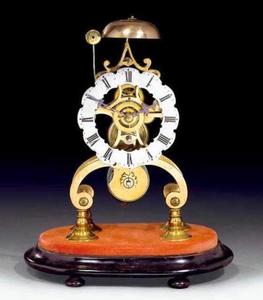Identification and Price guides for Antiques & Collectibles


ANTIQUE CLOCKS - Types, Historical Notes, and Appraisal Values
Join the most updated and complete collectibles research online - Learn more...
 There are several types of ANTIQUE CLOCKS, each with its characteristic details that place it in one category or another. Determining the type of Clock and its approximate age or maker are key factors in determining its value and worth in today's antiques market. Here are some basic types of antique clocks with specific notes on each from our Antiques Pricing Guides:
There are several types of ANTIQUE CLOCKS, each with its characteristic details that place it in one category or another. Determining the type of Clock and its approximate age or maker are key factors in determining its value and worth in today's antiques market. Here are some basic types of antique clocks with specific notes on each from our Antiques Pricing Guides:- ATMOS CLOCKS - refers to clocks made around the 1960s by JAEGER-LeCOULTRE in Switzerland that receive their energy from atmospheric pressure or temperature changes and can run unaided for years. They make use of a type of Torsion Pendulum and a sealed capsule of Ethyl Chloride. Although their design is fairly standard (somewhat boxy in glass & brass enclosures), Atmos clocks are very collectible and fetch good prices at auction, in spite of the fact that they are considered to be fairly new as compared to truly antique clocks. Their mechanism appeals mostly to collectors of Scientific Instruments and those interested in the Modernist decorative style.
- BRACKET CLOCKS - refers to clocks that are basically portable and have a hinged bracket for carrying from one room to another within a household. They first appeared in the mid-17thC and have been made ever since, but practically always in the same basic style of square and chunky Wooden (often Ebony) or Brass & Glass enclosures to protect their mechanism. The works are almost always spring-driven. Some are exceptionally elegant and have beautiful decoration in the form of finely carved features or Ormolu mounts. CARRIAGE CLOCKS, also called OFFICERS' CLOCKS are very similar, but smaller and were designed to be somewhat sturdier with more secure Balance Spring works for use while traveling. They first appeared ca early 19thC.
- BRASS CLOCKS and BRONZE CLOCKS - are fairly generic terms and refer to clocks of all sizes or forms that are made of either Brass or Bronze, respectively. Mechanisms can vary widely and were made in many countries, at times having their decorative enclosures made at one place and the works at another, usually France, such as by JAPY FRERES or Switzerland. Their appeal is based on their decorative style and quality of mechanism. Similarly for BRONZE MANTEL CLOCKS, which are usually accompanied by one or more decorative items in the same style to be displayed atop a fireplace mantle as tell-tale signs of an affluent household. The accompanying decorative items are usually referred to as Clock Garniture. Most antique Brass and Bronze clocks originate from France ca mid-19thC onwards - see examples of ANTIQUE FRENCH CLOCKS, including some in PORCELAIN.
- CARTEL CLOCKS - refers to clocks that are designed for hanging on a wall. Their overall mechanism and works are usually thinner and the dials larger for better visibility at a distance. Most are made of Brass or Bronze and usually are very elegant with richly embellished borders around the dial for an imposing and striking look. Giltwood Cartel Clocks first appeared around mid-18thC, but most examples of antique Cartel Clocks found in the market were made ca mid-19thC onwards.
- FIGURAL CLOCKS - refers to clocks that are either embedded within a Figure (such as a statuette or bust) or are garnished with Figurines or other decorative objects such as a pair of Urns or similar items. Most are made of Brass or Bronze and many in Porcelain. The vast majority of antique Figural Clocks originate from France and first became popular around the early part 19thC with very few exceptions of Figural Clocks made prior to that time, in many cases in Sterling Silver and which are priced appropriately high or are extremely rare.
- GILT CLOCKS - refers to mostly antique clocks of all ages and forms that have been decorated with Gilding, meaning that they have a thin layer of Gold applied on their prominent surfaces, either directly on Metal or Wood. These are often very stunning and much care goes into their craftsmanship as they are usually made by hand one at a time and with exceptional attention to detail. They are meant primarily for display and are usually appraised high. The embedded works are usually of secondary consideration as their value rests mostly on their beauty.
- LANTERN CLOCKS - refers to weight-driven clocks that are usually domed in shape, like a lantern, with a metal bell on top. They are meant for displaying on a wall to allow for their weights to move up & down freely. They first appeared as relatively functional time-tellers for homes around the 16thC in Britain, with a peak in production around the 17-18thC, but have since decreased in popularity. Nowadays, early examples are considered to be reasonably valuable collectibles because of their age and rarity since most original specimens have been destroyed or damaged as basically older utilitarian clocks, but their low decorative value and limited accuracy diminish their appeal as compared to other more stunning antique clocks that collectors love.
- GRANDFATHER CLOCKS - refers to tall standing clocks, mostly made of Wood and have a large Pendulum-driven mechanism. Their vitrine-like appearance makes them popular as large display furniture and their dials are usually decorated in shiny Brass or Enamelled Porcelain to enhance their overall decorative appeal. Deep-sounding bell-like striking mechanisms complete these clocks as elegant audible reminders of time. Because of their relatively large size and their dual purpose as furniture, Grandfather clocks are very desirable with collectors and usually fetch high prices at auction. For some collectors, these Grandfather Clocks trigger a sensitive nostalgic note from the past, which only adds to their popularity since many have had one of these at home when growing up or always admired them at an uncle's home who had it displayed prominently in the living room or near a grand entrance. Also referred to as Long-case Clocks or Tall-case Clocks or Floor Clocks, they first appeared around mid-17thC and featured an Anchor Escapement mechanism that was fairly accurate. Grandfather clocks are still made in the modern era either in the style of older specimens as modern reproductions or as newer Clock-Furniture in a more recent style. The vast majority of antique Grandfather Clocks were made in Britain by several clockmakers, including William Barrow (London), Thomas Hackney (London), Nathaniel Hedge (Colchester), Daniel Quare (London), and many others. In America, Grandfather Clocks were pioneered by Lauman Watson (Cincinnati, OH) in the early 19thC, most of which paradoxically used wooden mechanisms because of the high price of Brass or Metalworks available at that time in the US.
- MYSTERY CLOCKS - refers to clocks of all ages or styles that are made using peculiar and clever assemblies, whose works or components and decorative details seem to be almost suspended in air or be totally independent of each other. They are fascinating to look at and are attractive to many collectors, especially those with an inclination toward a scientific or engineering interest. Most antique Mystery Clocks are very elegant and are often garnished with detailed figurines in the Classical Greek style, made with a combination of Metal materials or Marble and beautifully arranged. Modern Mystery Clocks are simpler and minimalistic in design, yielding attention to their mysterious works rather than overwhelming the observer with decorative embellishments. Modern Mystery Clocks are usually smaller in size than antique ones and are primarily used as DESK CLOCKS.
- REGULATOR CLOCKS - are a ca late 19thC special category of PENDULUM CLOCKS [which were first introduced in mid-17thC in Holland]. Regulator clocks basically still used a Pendulum mechanism, but are substantially more accurate, mainly due to major improvements in their internal works, such as the Anchor Escapement. They come in many styles, but most are simple in form and without excessive decorative details. Because of their increased accuracy, they were used primarily within industrial or business settings and scientific labs. Unfortunately, the term "Regulator Clock" and in spite of its very specific meaning explained here, is regarded as very generic by many collectors and auctioneers so several examples we now see labeled as "antique regulator clocks", are not necessarily such, but rather general and less accurate Pendulum Clocks of all types or ages.
- SKELETON CLOCKS - are all types of clocks and in all decorative styles whose mechanism or works are fairly exposed to the observer, often through a glass dome that envelops the entire clock. This feature renders such clocks as showpieces and the inner workings are most frequently of high quality and elegantly assembled. In a way, the actual clockworks become part and parcel of the entire decorative construct and are enhanced accordingly to add to the overall appeal of the entire Skeleton Clock. Even the main clock dial is adapted so that it is almost camouflaged, but still visible and distinguishable. Because of the way they are made, most Skeleton Clocks are very sensitive and can be easily damaged when moved. Antique Skeleton Clocks seem to have become popular around mid-19thC onwards, but are hard to find and in most cases, their glass dome is missing or has been replaced. This general style of exposed clockworks has recently become popular again and many reproductions in the older decorative styles seem to have flooded the market - so use caution when attracted to one of these, it may not be as antique as you may be led to believe.
The above list is a brief account of most types of Antique Clocks that have emerged in the last two to three centuries and is meant to introduce collectors to their most significant characteristics and features in order to help in further researching your own treasures. As known, there are several Horological Museums or Exhibits in most major cities in America and around the world, and hopefully, the above brief summary on each type of antique clock can enhance this experience. For those deeply involved in Time-Keeping collectibles, a related interesting area of scientific collectibles is that for ANTIQUE SUN-DIALS, which is another fascinating and historical facet of a type of "clock" that existed since antiquity, but was still made in large numbers well into the 17thC. Most very antique Sundials are very ornate and are appraised consistently high, especially if there is an interesting provenance story associated with them. The vast majority of antique Sundials were made of Bronze or Brass and even Stone or Marble and are relatively simple in appearance. However, some exceptional examples were adorned with precious stones or metals and had nicely designed elements that nowadays fetch high prices at auction.
Unlock the true value of your collection with our comprehensive research guides from identifying makers' marks to appraising all kinds of antiques and collectibles, including items featured in this article.
Our up-to-date information will give you an accurate understanding of your items' worth. Don't miss out on this valuable resource - visit our research tools today!
In addition to some examples shown below on this page, you can also search our price guide for your own treasures.
Examples of related items from our Price Guides
-
A LE COULTRE & CIE FIFTEEN JEWEL ATMOS CLOCKA [more like this]
-
A LOUIS XV STYLE PORCELAIN MANTEL CLOCKA [more like this]
-
AN ENGLISH MAHOGANY TALL CASE CLOCKAn English [more like this]
-
A CHARLES X MARQUETRY INLAID MANTEL CLOCKA [more like this]
-
A FEDERAL MAHOGANY AND EGLOMISE BANJO CLOCKA [more like this]
-
A GEORGE III MAHOGANY AND BRASS BRACKET CLOCKA [more like this]
-
AN AMERICAN MAHOGANY PILLAR AND SCROLL CLOCKAn [more like this]
-
TWO TRAVEL CLOCKS AND A STOPWATCHTwo travel [more like this]
-
A LOUIS XV STYLE ELEPHANT FORM MANTEL CLOCKA [more like this]
-
A LOUIS XV STYLE BRONZE MANTEL CLOCKA Louis [more like this]
-
A FRENCH BRONZE FIGURAL MANTEL CLOCKA French [more like this]
-
A FRENCH GILT AND ROUGE MARBLE MANTEL CLOCKA [more like this]
There are many more auction results available to our members...
Explore more items from our
Antiques & Collectibles Price Guide
This list is limited to only a few results.
Many more items are available to our members through our
Price Guides!






